By Vasilia Polycarpou, The Sports Financial Literacy Academy
Peer pressure is a social phenomenon commonly linked to adolescence; where pressure or influence is exerted on an individual to follow their peers’ or social group’s behaviors, in an either positive or negative way. Peer pressure can be experienced by an individual as early as the age of 10, increasing dramatically during teenage years.
Giving in to peer pressure can create a sense of belonging since teenagers seek validation from their peers; trying to fit in. Teenagers experience major changes in their appearance and hormones as they go through puberty, and this can leave them particularly vulnerable to influence by their friends. As teenagers are still trying to figure out who they are and are actively forming their identities, experimentation is very common.
Thoughtless experimentation can range from skipping class or cheating on a test, to bullying, stealing and substance abuse. It is a common trap for teenagers to link their self-worth to feedback from their peers, especially with the rise of social media, where feelings of happiness or success may be linked to the number of likes an individual receives. In reality, this opens the door to negative peer pressure as well as self-criticism, leading to deterioration of mental health, anxiety and depression due to worsening levels of self-confidence. This in turn can have a negative impact on academic performance as well as lead to isolation from family members. All in all, asking a teenager to behave in a way that goes against their moral compass is a kind of negative peer pressure.
On the other hand, peer pressure may have positive effects as well, since surrounding yourself with high achieving people with healthy attitudes and behaviors may encourage you to achieve academic excellence, gain leadership skills, volunteer and participate in benevolent extracurricular activities.
It is undoubtful that peer pressure can come in different forms, affecting teenagers in varying ways. Specifically, direct peer pressure can occur in a spoken or unspoken form, pressuring the receiver to make an on-the-spot decision, for example when a teenager gives another a cigarette.
Another prevalent form of pressure, which can be easily ‘‘concealed’’, is indirect peer pressure. This can be identified, for example, when a teenager finds out that the social group they look up to, is getting tattoos. This might make them feel the need to get tattoos as well, in order to keep up.
Additionally, spoken peer pressure is also common. This occurs when an individual directly persuades another, through their words, to behave in a certain way. This type of pressure is usually more effective in a group context where it is more challenging for an individual to say no. For example, a group intervention, where an individual is urged to seek treatment for their alcohol abuse.
Finally, unspoken peer pressure is commonly experienced in situations where an individual is exposed to the actions and behaviors of one or more of their peers and they need to decide whether they are willing to follow those behaviors or not. These behaviors could range from fashion choices, such as wearing a specific style of clothes, to joining a club or team.
With peer pressure being an inevitable part of social interactions, a parent’s /guardian’s/ mentor’s goal should be to equip the child with the right tools to deal with negative and embrace positive peer pressure, since such skills are essential for life as a teenager but also for life as an adult.
As a parent, try to encourage open, two-way communication with your child from an early age. Engage in active listening, taking into account not only the child’s words but also their body language and facial expressions. Noticing non-verbal cues, as well as patterns, will help you understand your child at a deeper level. This is especially important, since a teenager may avoid having long conversations about their personal life, which may make them feel uncomfortable. Let your child know that you are there for them, willing to listen and support them in dealing with any struggle or pressure they may be experiencing. Try to normalize discussing feelings without being too pushy and avoid being judgmental when they do decide to talk to you.
It would also be helpful in getting a teenager to open up to you, to share your own personal experiences of peer pressure, in a way they can relate to, as well as how you handled them. This will not only provide guidance on how to deal with their own struggles in a subtle way, but it will also allow teenagers to trust and confide in you, as well as realize that what they are going through is something commonly experienced.
Furthermore, teaching your child how to set boundaries and adhere to them can go a long way. Setting boundaries can be crucial when experiencing peer pressure since they allow an individual to protect themselves from damaging influences as well as gives them the ability to stand by their own opinions and beliefs.
It is also important, to make an effort to get to know your child’s friends and their parents, by inviting them over or arranging outings in an attempt to become familiar with them. This form of bonding can encourage higher levels of communication and collaboration with their friends’ parents and/or the friends, as well as provide you an insight into what influence these people can exert on your child and how it should be handled.
When it comes to positive peer pressure, encourage your child to surround themselves with high achieving, positive and ethical people, as well as individuals they look up to. Seeking out positive relationships and choosing friends who respect them and do not put unfair pressure on them can help them build a personality based on strong moral values and fulfilling goals and priorities.
Fostering independence in your child is vital for them leading the life they deserve. Teach them to listen to their intuition and believe in themselves and their abilities. They need to learn that they should not lose themselves trying to satisfy everyone, especially at the expense of their own wants and wishes.
Finally, with social media promoting unrealistic role models, beauty standards and ways of life, teenagers are subject to immense pressure on how they ‘‘should’’ look, behave and what their life ‘‘should be’’. As a parent, you should educate your child on these matters, helping them understand that real life is very far from what social media present. Likes should not be, in any way, associated with self-worth.
All in all, peer pressure is unavoidable, at any age, especially during adolescence, when forming relationships and making social connections. Therefore, it is essential for individuals to learn how to handle it from an early age, to be able to minimize the harmful effects of negative influences whilst embracing positive ones. The key is trying to stay authentic to oneself and knowing your worth, instead of going against your beliefs for temporary conditional friendships.
The Money Smart Athlete® Blog is established and run by the Sports Financial Literacy Academy® (SFLA). Through its education programs the SFLA has the vision to financially educate and empower athletes of all ages to become better people, not just better athletes. For more information on our courses, our SFLA Approved Trainer Program®, and how they can benefit you and your clients, please get in touch with us at [email protected].

